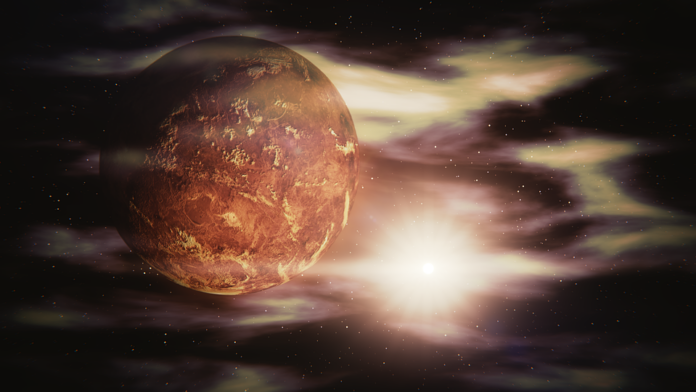Billions of years ago, when the Solar System was still very young, one of its planets enjoyed a temperate climate, with blue skies and large amounts of running water, forming seas and rivers all over its surface. But that privileged world was not Earth, but Venus.
Today, however, things are very different. It is the Earth that has abundant water and enjoys a range of temperatures that make it possible for life to flourish, while Venus has become a real hell, with temperatures reaching 450 degrees and with a poisonous atmosphere It consists mainly of carbon dioxide and nitrogen. But what was it that caused this drastic change to take place?
twin planets
Both Venus and Earth are very similar in size and also share mass and volume. That is why they are considered as “twin planets”. But given its current conditions, deciphering what Venus was like in the past is not an easy task.
We know, for example, that its current surface is relatively young, “only” between 300 and 700 million years old, and the data collected by the space missions that have visited it so far suggest that its atmosphere once had much more water than it contains today.
For all we know, Venus could have abundantly hostedliquid water on its surfaceand have had tectonic plates and a mild weather and stable.
Some studies indicate that the climate of Venus could have been even more stable than that of the primitive Earth itself, where climate fluctuations caused long periods of extreme heat alternating with others so cold that they turned it, on several occasions, into a gigantic “snowball”with its icy poles extending over its entire surface until they touch at the equator.
There are several theories that try to explain what led to the drastic transformation of Venus. Some point to a gradual warming of the Sun, which would have overheated the planet after allowing it to enjoy a brief period of habitability; others speak of the sudden appearance from the interior, some 4 billion years ago, of an entire ocean of magma and greenhouse gases that would have changed it completely, leaving it in its current state.
vast ocean
And now, in a study just published in Journal of Geophysical ResearchMichael J. Way and Anthony D. Del Genio, researchers at NASA’s Goddard Institute for Space Studies, have presented evidence that an extensive shallow-water ocean, along with conditions fit for lifecould have persisted on Venus for at least 3,000 million years and until relatively recent timesuntil several large magmatic, or igneous, provinces (called LIP for its acronym in English), emerged at the same time from the depths ending the long warm period in one fell swoop.
The researchers carried out several computer simulations of the history of Venus using a NASA model (ROCKE-3D) to examine how variations in the planet’s rotation rate and its surface water levels might have influenced its climate. primitive.
Early atmosphere of Venus
Thus, assuming that the early atmosphere of Venus was cold and rich in carbon (like that of the early Earth) and that its rotation rate was slow, Way and Del Genio found that the climate of Venus could have remained stable for most of its 4 billion year history. Which is directly opposed to the theory of gradual heating of the Sun.
According to the researchers, the simultaneous eruptions of the large igneous provinces took place in recent times, during the last hundreds of millions of years. And they could have caused a runaway greenhouse effect by almost simultaneously releasing huge amounts of carbon dioxide into the atmosphere.
The surface, then, dried up, and this could have led Venus to a new type of dynamic between the interior and exterior of the planet, with the appearance on the surface of large masses of basalt, which is what is seen today, capable of to act as efficient “sinks” of oxygen.
Venus, like on Earth
The phenomenon, although not so drastically, has also happened on Earth. Here, in effect, the great igneous provinces have emerged sequentially in a random process, and not all at the same time. which, according to the authors “It was lucky for life as we know it today”.
However, not enough is yet known about the interior of Venus to ensure that its final, uninhabitable state is the direct product of these internal processes. Under similar circumstances, would the same thing have happened on other similar planets, including Earth? Researchers need to study the surface of Venus further to answer that question.
A better understanding of the history of our sister planet will also provide valuable information on the processes to which terrestrial exoplanets are subjected, whose habitability periods could be much longer than is believed today.
Font: Jose Manuel Nieves / ABC
Reference article: https://www.abc.es/ciencia/abci-venus-could-host-life-for-more-3000-million-years-202005192047_noticia.html






![[Img #74662]](https://thelatestnews.world/wp-content/uploads/2024/12/Organisms-with-the-shortest-life-150x150.jpg)






![[Img #74662]](https://thelatestnews.world/wp-content/uploads/2024/12/Organisms-with-the-shortest-life-300x200.jpg)


Add Comment